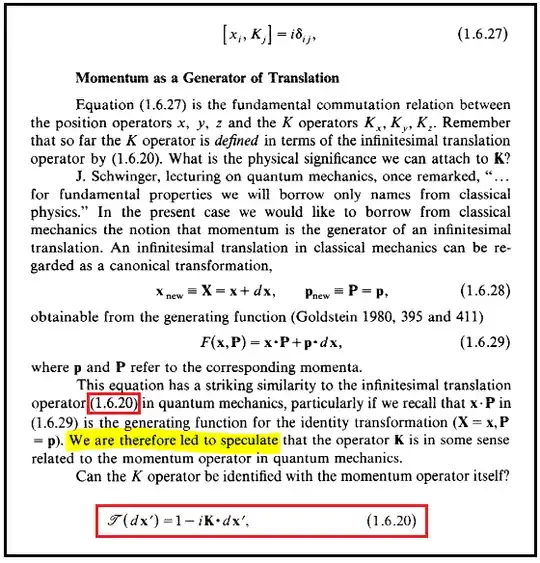I suspect what is confusing you is the apparent typo in (1.6.29) where the p is supposed to be P to yield the first of the equations (1.6.28): it is a type 2 generating function, after all, F(x,P), with ${\mathbf X}=\partial F/\partial {\mathbf P}$, in our case $= {\mathbf x} +d {\mathbf x} $. So, as he reminds you, F is a machine consisting of the identity plus a piece that ads a small increment $d {\mathbf x} $ to ${\mathbf x}$ and nobody else, as ${\mathbf P}=\partial F/\partial {\mathbf x}={\mathbf p}$, so, basically, a gradient w.r.t. x.
This is meant to evoke the standard linear QM shift operator of Lagrange, a mere rewriting of Taylor's series around the constant dx,
$$
e^{id{\mathbf x}\cdot {\mathbf K}}f({\mathbf x})= f({\mathbf x}+d{\mathbf x})\\ \approx ( I +id{\mathbf x}\cdot {\mathbf K} )f({\mathbf x}) = f({\mathbf x})+ d{\mathbf x}\cdot \partial f/\partial {\mathbf x},
$$
the increment term also involving a gradient.
The evocation and the name are not that necessary, really; if you were a Martian, the commutation relations of K with x dictating representation thereof with a gradient $-i\nabla$ would tell you everything you need. But the two S's remind you that you should expect to observe this shadow-dance between QM and classical mechanics, and K should strongly evoke the classical phase-space variable p, so it's good mental hygiene to call it momentum.
The minus sign you have is because S defines his translation on kets, which transform with a minus sign w.r.t. bras, and functions are basically bras, $f(x) =\langle x | f\rangle$. I could have done the whole thing with the minus sign and the kets, without reminding you that you are really discussing a bland Lagrange shift, in pompous language, after all.
